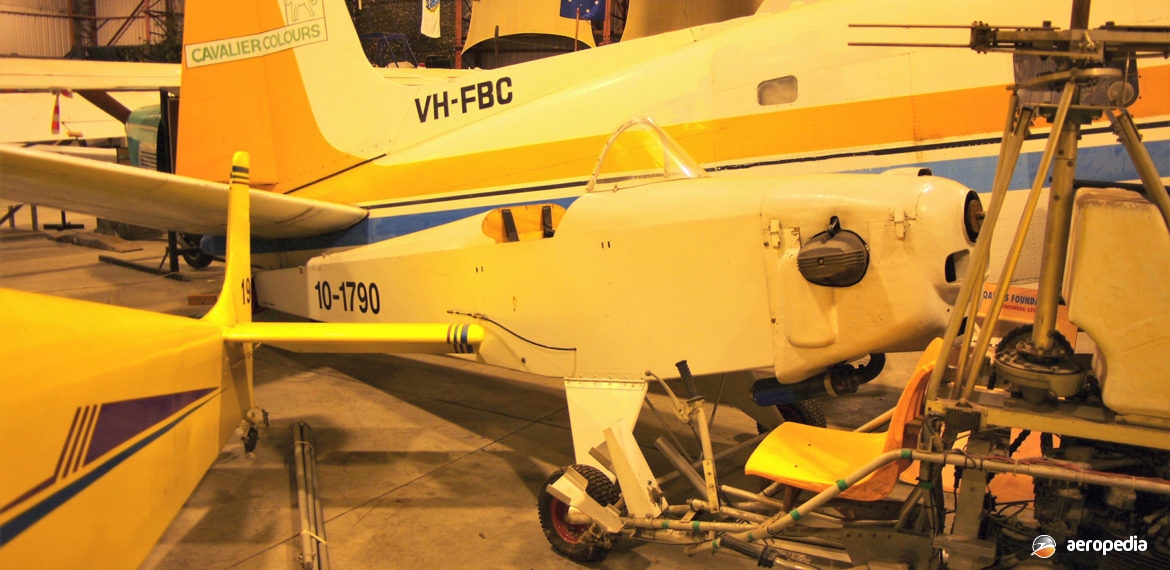Photograph:
Team Z-Max 10-1790 (c/n 196D) at the Australian Aviation Museum, Bankstown, NSW (David C Eyre)
Country of origin:
United States of America
Description:
Single-seat light sport monoplane
Power Plant:,
One 34 kw (45 hp) Zenoah G-50 two-cylinder, two-stroke, carburetted air-cooled engine
Specifications:
- Wingspan: 7.6 m (25 ft)
- Length: 4.87 m (16 ft)
- Wing area: 10.45 m² (112.5 sq ft)
- Max speed: 161 km/h (100 mph)
- Cruising speed: 113 km/h (70 mph)
- Stalling speed clean: 53 km/h (33 mph)
- Stalling speed in landing configuration: 48 km/h (30 mph)
- Rate of climb: 274 km/h (900 ft/min)
- Service ceiling: 3,048 m (10,000 ft)
- Fuel capacity: 19 litres (4.16 imp gals)
- Range: 241 km (150 miles)
- Take-off roll: 46 m (150 ft)
- Landing roll: 66 m (215 ft)
- Empty weight: 141 kg (310 lb)
- Payload: 86 kg (190 lb)
- Loaded weight: 254 kg (560 lb)
History:
For many years Team Incorporated of Bradyville, Tennessee produced a range of ultralight aircraft for the sport aircraft market, these being produced in kit form for the amateur builder with limited finance. The Z-Max was a single-seat, mid-wing, strut-braced aircraft. The first of the series was flown in 1984 and was designed as a minimum cost aircraft that could be built in a small garage with minimum skills. However, the Company went into liquidation and production of the series passed to Ison Aircraft which operated from the same city in Tennessee. Later again rights to the series were transferred to JDT Mini-Max of Nappanee in Indiana and was in 2012 re-named Team Mini-Max LLC, production moving to Niles in Michigan.
Construction of the series was mainly from wood truss with plywood gussets and the aircraft was covered with fabric. Wingspan of most models was 7.6 m (25 ft) but the 1600R Eros had an 8.1 m (26 ft 5 in). The series was designed to meet US FAR 103 Ultralight Vehicles regulations and most models were powered by the Rotax 277 engine but the Hirth F-33 has also been installed.
The Z-Max was a variant of the basic design with either an open or enclosed cockpit, depending on the wishes of the builder. It was powered by a 34 kw (45 hp) Zenoah G-50 engine, the prototype of this model first flying in 1991. It was produced in two basic models, the 1200Z and the 1300Z, and these have been known as the Zee-Max.
A small number of examples were built from kits in Australia, one becoming 10-1790 (c/n 916D) with the RAA from April 1996 to 2001. In 2014 this aircraft, after retirement, was donated to the Australian Aviation Museum at Bankstown, NSW. Following the closure of the museum in 2019 its fate is not known.

